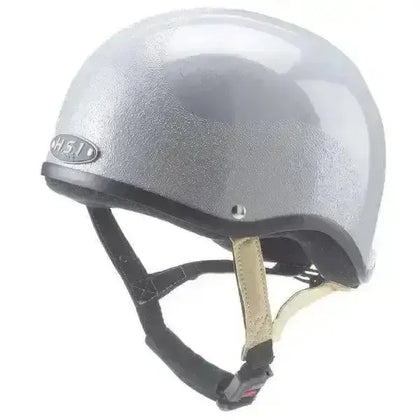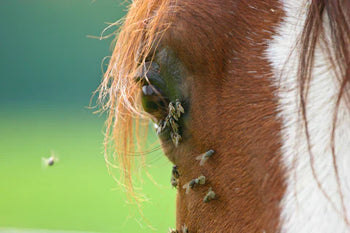

Table of contents
Horse Riding Hat Standards 2025
Horse Riding Hat Standards in the UK can seem very confusing so we have pulled together information on what the horse riding hat standards are and how they are tested to ensure the best safety for horse riders. With stringent testing by recognised authorities, we can ensure Horse Riding Hats and Helmets that are on the market provide adequate head protection.
Horse Riding Hat manufacturers have their hats tested by a number of internationally known testing labs. These labs offer different test for horse riding hat standards You will see that the different testing labs for Horse Riding Hat Standards work to slightly different levels.
Some manufacturers will have multiple labels making them more acceptable across multiple disciplines and countrys. It does not mean that your hat needs all of these standards.
These Horse Riding Hat Standards test the helmet's resistance to various impacts and accident scenarios, including flat impact, edge impact, and crush resistance
Horse Riding Hat Standards are constantly developing as technology and knowledge improves, here are the Current Riding Hat Standards for 2025. The most important Horse Riding Hat Standards to look for are:
If you are competing it is important to check that your riding hat carries the labels of the standards required to compete.
SEI ASTM Horse Riding Hat Standards
SEI ASTM F1163:2023 Horse Riding Hat Standards
SEI - Safety Equipment Institute and ASTM - American Society for Testing and Materials work together to provide one of the most comprehensive safety standards in the world.
The Horse Riding Hat Standard SEI certification is a stamp of approval, indicating that a helmet meets ASTM standards
The importance of both Horse Riding Hat Standards ASTM and SEI are important because they ensure that helmets are designed and manufactured to provide adequate impact protection for riders.
Tests for flat impact and edge impact, with the 2023 version also including crush resistance.
Hats with this standard do not have to have a BS1 Kitemark.

BS1 Kitemarked Horse Riding Hat Standards
The BS1 is a voluntary addition and is synonymous with quality and reliability. BSI Kitemark indicates that the product has been independently tested and certified by the British Standards Institution
For riding hats to obtain a BSI Kitemark (PAS015 and VG1) the authority check one of every 200 helmets from a batch of 800 to 3,200 before they will issue an approval label.
If the helmets do not pass the standard, then the entire batch must be destroyed.
PAS015:2011 (British Standard) Horse Riding Hat Standards
The PAS015:2011 is considered a high safety standard for riding hats, focusing on impact protection and stability. Must be BSI Kitemarked.
This Horse Riding Hat Standards, updated in February 2025
- 3 x impact onto a flat surface from 1.8m
- 1 x impact onto a hazard edge from 1.3m
- 3 x impact from a spike at 75cm
- crush resistance of 800 newtons

VG1 01.040 2014-12 (European Standard) Horse Riding Hat Standard
For riding hats to achieve the VG1 is a European standard tested to the following.
- 2 x impact onto a flat surface from 1.8m
- 2 x impact onto a hazard edge from 1.3m
- 2 x impact from a spike at 50cm
- crush resistance of 630 newtons

SNELL Horse Riding Hat Standards
SNELL Horse Riding Hat Standard - (International)
Considered to be one of the highest standards and is Internationall accepted currently.
Testing for
- Impact management - how well the helmet protects against collisions with large objects.
- Helmet positional stability - whether the helmet will be in place, on the head, when it's needed.
- Retention system strength - whether the chinstraps are sufficiently strong to hold the helmet throughout an incident involving head impact.
- Extent of Protection - the area of the head protected by the helmet.
This Horse Riding Hat Standard tests for a wider range of impacts, including rotational and crush scenarios, making it a good choice for cross-country riding

Horse Riding Hat Standards No Longer Accepted
The (BS)EN1384 Horse Riding Hat Standards does not necessarily affect riders unless you compete. If your hat only has the (BS)EN1384 safety standard then you may need to buy a new hat with the PAS015-2011 or VG1 standard if you intend to compete. Hats with the (BS)EN1384 standard are still permitted for competition in 2015 but not going forward into 2016. Leisure riders are not affected by this change and can continue to wear hats with (BS)EN1384.
Horse Riding Hat Standards For Equestrian Disciplines 2025

BETA Guide To Riding Helmets

Horse Riding Hat Standards Safety Testing

Check Out Our Full Range Of Horse Riding Hats
How Are Riding Hats Tested
What do these Horse Riding Hat Standards actually test? Safety standards evaluate:
- Impact absorption - Protection against head injuries
- Penetration resistance - Defense against sharp objects
- Retention system strength - Chin strap effectiveness
- Stability - How securely the helmet stays positioned
- Durability - Long-term performance of safety features
- Deflection properties - How impacts are distributed
How often are helmets tested during production? Quality control varies by standard, but BSI Kitemarked helmets have one unit tested from every 200-3,200 produced. Failed batches are destroyed entirely, ensuring consistent safety performance.
Pendulum Testing Of Horse Riding Hats
Using a pendulum impactor, they test the helmet at the front, side, and rear locations, with two different impact severities. These test energies are based on industry standards, video analyses of equestrian falls, and peer-reviewed equestrian research. The lower and higher energy conditions represent a range of impacts likely to cause concussions.
Oblique Drop Testing Of Horse Riding Hats
Using a guided drop tower, we impact the helmet at the front boss and rear boss locations. Drops are performed at the speed and anvil angle recommended by the Fédération Équestre Internationale (FEI), addressing impact points distinct from those tested in the pendulum protocol.

Summary Of Horse Riding Hat Standards
Choose a riding hat that is appropriate for the level of riding you will be doing
If you are competing ensure you have the current standard appropriate to your equestrians discipline you are riding in
Replace your riding hat at least every 5 years or if it might have been compromised
If horse riding hat meets multiple standards offers more comprehensive protection and covers a wider range of potential accident scenarios
Frequently Asked Questions About Horse Riding Hat Standards
What does BSI Kitemark mean?
The BSI Kitemark indicates rigorous quality control testing. One helmet from every batch of 200-3,200 helmets is tested, and if it fails, the entire batch must be destroyed. This ensures consistent safety standards across production.
Are older safety standards still valid?
PAS 015:1998 helmets are still permitted for competition if they have the BSI Kitemark. However, PAS 015:2011 offers enhanced protection with 30% greater impact heights, 20% stronger impact forces, and 27% greater crush resistance compared to the original 1998 standard.
What happens if my helmet doesn't meet current standards?
You may be refused entry to competitions or training facilities. Some venues conduct helmet checks and will not allow riders with non-compliant helmets to participate. You are well adviced to check your hat at the begining of a season to ensure it complies with current Riding Hat Standards
What's the difference between PAS 015:2011 and BS EN 1384:2023?
PAS 015:2011 is the established British standard with proven track record, while BS EN 1384:2023 is the newer European harmonized standard. Both provide excellent protection when properly fitted.
How often should I replace my riding hat
The five-year helmet replacement guideline is a safety measure to ensure the materials inside your helmet still offer maximum protection, as helmet materials degrade over time due to exposure.
Does my hat have to have a kitemark for it to be safe
Whilst the majority of horse riding hats in the UK will have a Kitemark it is a voluntary addition.
If your hat has any of the other accreditations then you can be assured it complies with current Riding Hat Standards, however, some associations will also ask for a hat to have a Kitemark.
You can check if your hat is up to standard for the different associations from our chart above
How often are Riding Hat Standards changed
There is no specific time scale as to how often Riding Hat Standards are changed. A change in Riding Hat Standards id normally due to a change in legislaqtion







